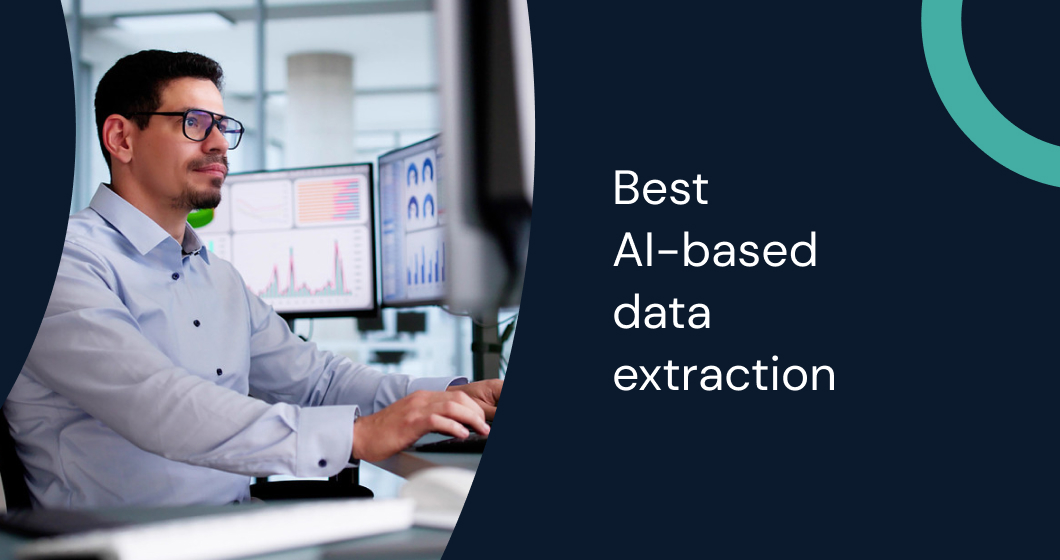You know that outdated data extraction methods cost time, money, and accuracy—manual entry errors carry compliance risks, rigid scripts choke on new layouts, and slow turnarounds stunt your team’s agility. The latest AI-based data extraction solutions eliminate these pain points by delivering accuracy and real-time adaptability to novel formats, and seamless integration into existing workflows in a fraction of the time manual processes demand.
1. Daloopa
Best For: Financial analysts and investment teams handling SEC filings, earnings transcripts, and complex regulatory documents.
Daloopa streamlines financial data extraction by combining sophisticated AI models with human audit checks for consistent accuracy. It ingests annual reports, 10-K/10-Q filings, and investor presentations, converts unstructured narratives and tables into standardized schemas, and delivers datasets ready for modeling.
- Automated Financial Extraction: Parses XBRL, PDF, and HTML filings into cell-level data points.
- Speed and Accessibility: Converts hours of manual work into minutes via REST API endpoints, Excel add-in automations, and interactive dashboards.
- Integration Depth: Supports custom volume-based pricing, dedicated onboarding, and schema tweaks for enterprise-scale deployments.
Every cell links directly to its original SEC filing or source document via one‑click hyperlinks, ensuring full transparency and traceability. Hard‑coded figures eliminate hidden formulas, preventing unintended model breakage and preserving calculation speed.
Model updates trigger automatically when new filings arrive, so your spreadsheets stay current without manual intervention. This kind of AI-based data extraction makes it easier than ever to integrate real-time financials directly into Excel models, reducing errors and time-to-insight.

2. Rossum
Best For: Accounts payable teams and shared service centers processing high volumes of invoices and freeform documents.
Rossum’s cognitive capture engine reads documents like a human, understanding layouts and context, so you don’t spend months creating templates.
- Template-Free Onboarding: Starts automating without extensive setup; handles multiple layouts out of the box.
- API-First Design: Exposes REST APIs and webhooks for seamless integration with SAP, Coupa, and Workday.
- Adaptable Validation: Exception handling UI lets reviewers correct mistakes that immediately train the model.
Rossum brings AI-based data extraction into finance departments through adaptive learning and minimal setup time, perfect for teams automating data extraction to Excel with limited tech support.
3. ABBYY FlexiCapture
Best For: Compliance-focused industries (healthcare, government) requiring advanced OCR, layout recognition, and rule-based processing.
ABBYY combines classic OCR prowess with AI-driven document classification and flexible template creation to tackle structured, semi‑structured, and unstructured documents.
- Multi‑Language Support: Recognizes handwriting and multilingual text in complex layouts.
- Deployment Options: Cloud or on-premise, with RESTful APIs and enterprise connectors.
- Continuous Learning: FlexiLayouts adapt to new formats over time, requiring minimal maintenance.
ABBYY is a leader in AI-based data extraction, especially for multilingual or compliance-heavy industries. Its seamless integration with AI-powered Excel tools also supports automated spreadsheet population.
4. UiPath Documentation
Best For: Organizations combining Robotic Process Automation (RPA) with AI for end‑to‑end process automation in specialized verticals.
UiPath’s Document Understanding framework layers smart OCR, pre‑trained ML models, and custom AI Center workflows atop its market-leading RPA platform.
- Smart OCR Tech: Leverages multiple engines, including ABBYY and Google Vision, for high precision.
- Pre‑Trained Industry Models: Includes healthcare billing, legal contracts, and tax forms.
- Low-Code Model Training: Business users fine‑tune extractors via a visual interface—no PhD required.
- Human-in-the-Loop Feedback: Review station corrections feedback to AI Center, boosting accuracy over cycles.
Thanks to its flexible architecture, UiPath is an ideal foundation for AI-based data extraction across departments that rely on AI-powered Excel tools to manipulate outputs.
5. Amazon Textract
Best For: Teams already on AWS needing scalable, pay-as-you-go extraction of text, forms, tables, and handwriting.
Amazon Textract uses deep learning to extract content while preserving document structure and relationships.
- Layout-Aware Extraction: Preserves table and form field relationships for accurate downstream analysis.
- Synchronous & Asynchronous Modes: Choose real-time or batch processing based on latency needs.
- Serverless Integration: Hooks into S3, Lambda, and SageMaker for scalable, event-driven pipelines.
Teams automating data extraction to Excel in AWS environments will benefit from Textract’s seamless workflows and industry-leading AI-based data extraction capabilities.
How AI-Based Data Extraction Works
AI-based data extraction combines machine learning and vision tech to bring structure to the unstructured. These tools not only replace manual labor but also improve precision over time.
Natural Language Processing (NLP) and Machine Learning
You leverage NLP to identify entities, interpret relationships, and extract context-dependent insights from contracts, medical records, or legal disclosures. For example, NLP can pull patient histories from EHR scan reports by combining OCR outputs with transformer-based models, optimizing clinical workflows, and reducing chart review time.
Machine learning layers refine predictions as more documents flow through your system. Whether you’re processing 10-K risk disclosures or mortgage clauses, models learn new vocabulary and layouts dynamically, eliminating brittle template maintenance. This self-improvement mechanism is at the heart of AI-based data extraction solutions across industries.
Computer Vision and Optical Character Recognition (OCR)
Modern OCR exceeds 99% character accuracy on clear scans and uses vision techniques to detect tables, headings, and key-value pairs by position and style. Smudged text and angled scans no longer block workflows—preprocessing filters correct skew and enhance contrast before extraction.
Real‑time OCR lets you upload a photo of a contract on your phone and get structured data back in a second, perfect for field inspections or mobile audits. Many AI-powered Excel tools now embed these vision capabilities to streamline spreadsheet automation.
Integration and Automation in AI Data Extraction
AI-based data extraction tools shine brightest when paired with automation. Tight integration with internal systems can turn hours of work into a few automated steps.
API Integrations and Data Workflows
All five platforms expose RESTful APIs or webhooks to connect with ERP, CRM, and BI tools. You automate flows like:
- Routing incoming invoices to accounting workflows.
- Triggering compliance audits when red-flag terms appear.
- Real‑time dashboard updates on extraction outcomes.
Low‑code tools let non‑engineers orchestrate these workflows, turning days of integration into hours. And when automating data extraction to Excel, that means updating reports with zero user input.
Choosing the Right AI-Based Data Extraction Tool
Selecting the optimal extractor depends on your industry, document types, and existing stack. Use this checklist to guide your evaluation:
- Accuracy & Adaptability of AI Extraction: Pilot with your own files; aim for 95%+ precision under real conditions.
- Integration Ease: Verify API docs, SLA terms, and native connectors for key systems.
- Speed & Scalability: Assess synchronous vs. batch modes and expected processing volumes.
- Learning Curve: Look for low-code training interfaces and template‑free onboarding.
- Security & Compliance: Confirm data encryption, audit logs, and relevant certifications (e.g., HIPAA, SOC 2).
- Total Cost of Ownership: Compare per‑page pricing, subscription tiers, and internal maintenance costs.
Trial periods or sandbox environments reveal real‑world fit faster than feature comparisons alone—run parallel tests on a representative sample of your documents before committing.
Deepen your evaluation by engaging cross-functional stakeholders—procurement, IT, finance, and end users—to ensure the chosen solution aligns with operational and budgetary goals. Conduct live demonstrations and hands-on workshops to validate ease of use and confirm that key workflows, such as exception handling and audit reporting, perform under realistic conditions.
As you pilot each tool, measure success against predefined KPIs—accuracy improvements, processing time reductions, and user satisfaction—and collect qualitative feedback to drive iterative refinements. Prioritize vendors who offer strong change-management support, clear training resources, and committed customer success teams, ensuring your organization can scale AI-based data extraction workflows confidently and sustainably.
Simplify Your Data Extraction with Daloopa
Supercharge your analysis, slash manual drudgery, and never question a data point again. Daloopa’s AI‑powered platform automates extraction, traces every figure back to source, and updates your models in real time with just a click. It supports automating data extraction to Excel with precision, speed, and complete transparency.
Ready to turn financial filings into strategic insights? Try our demo to see if Daloopa is the AI-based data extraction tool that can transform your team’s productivity today.



